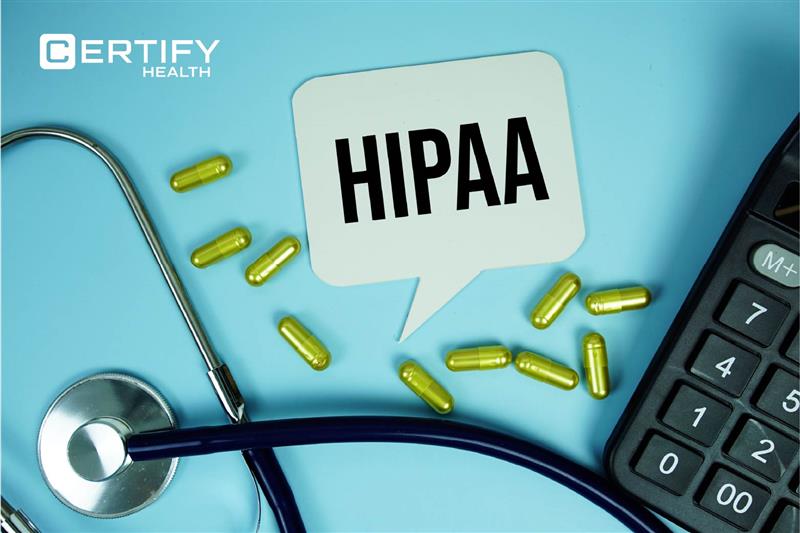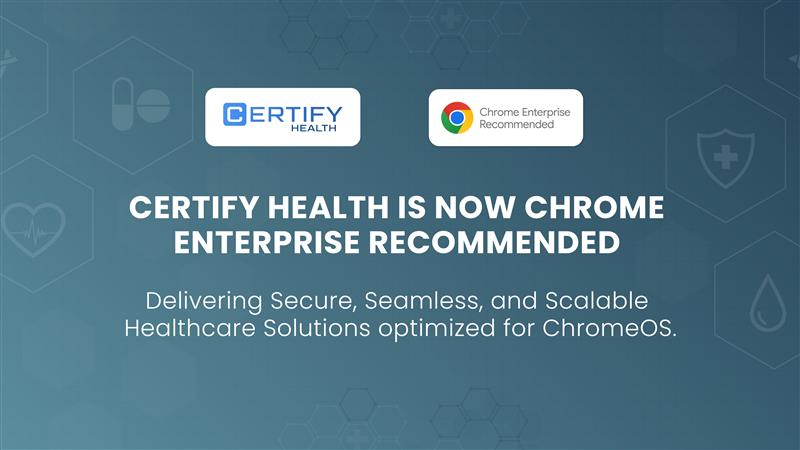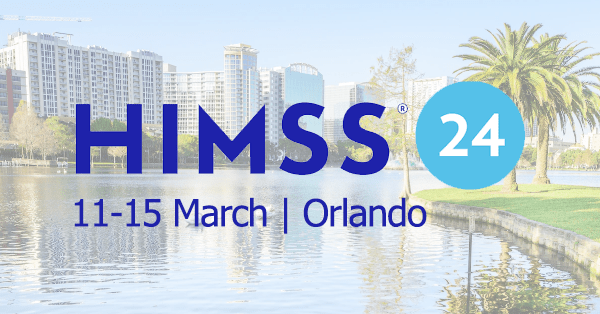Introduction
Imagine this – You have just sent an email containing a patient’s test results and medication details to what you thought was their inbox. An hour later, you realize that you sent it to the wrong person. You could be in danger of a HIPAA violation, heavy fines, and reputational harm to your clinic due to this small mistake. In healthcare practices around the nation, this horrific scenario occurs more frequently than you might imagine.
In healthcare, patient communication has become incredibly dynamic. Between emails, texts, patient portals, and telehealth platforms, there are more ways than ever to connect with patients—but also more opportunities for privacy missteps. This is precisely where HIPAA compliant patient communication becomes not just important, but essential for healthcare providers.
The key point of balance between using modern communication methods and safeguarding private patient data is HIPAA compliance. Every healthcare company must strike this balance; it is not an option.
In this comprehensive guide HIPAA compliant patient communication, we will walk through everything you need to know what it means, what requirements you must follow, best practices to implement, and the benefits of getting it right. So, keep reading ahead.
Understanding HIPAA Compliance in Patient Communication
What is HIPAA Compliance?
Healthcare Insurance Portability and Accountability Act or HIPAA compliance is all about following regulations laid down to ensure patient’s sensitive health data does not get leaked to anyone without authorization. HIPAA compliant patient communication in simple words is about how healthcare professionals communicate with patients while maintaining their privacy and security for the practice.
The HIPAA framework consists of three major components that directly impact patient communication:
- The Privacy Rule: This rule is created to ensure that the personal health information (PHI) and medical records of the patient is safeguarded.
- The Security Rule: Emphasizes electronic protected health information (ePHI) in particular and calls for suitable technical, administrative, and physical protections.
- The Breach Notification Rule: This rules states that in case an unsecured PHI breach occurs then practice should notify the impacted party promptly.
Protecting PHI or any personally identifiable health information pertaining to an individual’s physical or mental health, the provision of healthcare, or the payment for healthcare services—is the fundamental goal of HIPAA compliance.
Key Requirements for HIPAA Compliance
There are some key requirements for HIPAA complaint patient communication, if the healthcare practices or organization fulfills these requirements, they need not worry about the non-compliance issues or legal penalties. Read these requirements for HIPAA Compliance as mentioned below:
- Ensuring confidentiality, integrity, and availability of all PHI: To protect patient information (PHI), we must ensure it is kept private, accurate, and available only to those who are authorized to access it.
- Adhering to the minimum necessary standard: We should follow the principle of using the minimum necessary information. This means sharing only what is needed for a specific purpose. For instance, when sending appointment reminders, there’s no need to mention the patient’s medical condition.
- Implementing appropriate safeguards: We need to put the right safeguards in place. This includes setting up policies, controlling physical access, and using technology such as encryption.
- Managing business associate relationships: If we work with third-party services that manage PHI, we must have Business Associate Agreements (BAAs) to ensure they protect that information.
Understanding these requirements is the first step toward establishing HIPAA compliant patient communication practices in your healthcare organization.
Did you know?
A study by the Joint Commission International found that 80% of serious medical errors happen due to miscommunication between caregivers during patient handovers.
Communication Channels and Their HIPAA Compliance Requirements
Email Communication

Email remains one of the most common methods of communication, but it presents significant HIPAA compliance challenges. To maintain HIPAA compliant email communication:
- In any circumstances, before sending any PHI by email, get the patient consent by making them sign the patient authorization form, except for treatment situations where the patient has consented to this modality.
Why? The reason being email can be intercepted, redirected, or accessed by unauthorized individuals, particularly when it is not encrypted; therefore, it can expose patients to identity theft, breaches of privacy, and violations of HIPAA laws. - Make sure that emails are secured by end-to-end encryption in transmission and at rest. Standard email platforms used are HIPAA non-compliant; if not then find a HIPAA-compliant email platform (e.g., Microsoft 365 with a BAA) that offers the necessary security measures.
- Do not include PHI in subject lines of the email you are sending as these are typically not encrypted; use generic subject lines like “Patient Update” instead.
- Sign Business Associate Agreements (BAAs) with your email service providers. Major providers like Google and Microsoft offer BAAs for their business accounts.
- Consider using secure patient portals instead of traditional email for sharing sensitive information, and ensure emails are sent via a HIPAA-compliant platform with encryption and other safeguards.
Remember that unencrypted emails are particularly vulnerable to interception, making them a high-risk channel for sharing PHI.
Phone Communication

Phone calls remain essential for HIPAA compliant phone communication, but they require proper protocols:
- Verify your patient’s identity by asking for details like their name, DOB, patient ID, or address before sharing health information over the phone. Train your team to spot red flags—like hesitation or odd answers—that might suggest an imposter.
- Get your patient’s agreement before discussing their health info over the phone, especially with family or caregivers. If they’re on the call, ask, “Is it okay if I discuss your care with your spouse?” If they’re not there, use your judgment to decide if sharing is in their best interest, and note your decision. We want to respect our patients’ wishes!
- For HIPAA compliant phone calls, ensure staff use private areas for conversations to prevent others from overhearing. Keep voices low, use headsets to avoid sound carrying, and hide screens with patient info from others during the call.
When you are leaving voicemails, limit the information to the minimum necessary, meaning – just include your name, practice name, and callback number without mentioning any specific health information.
Text Messaging
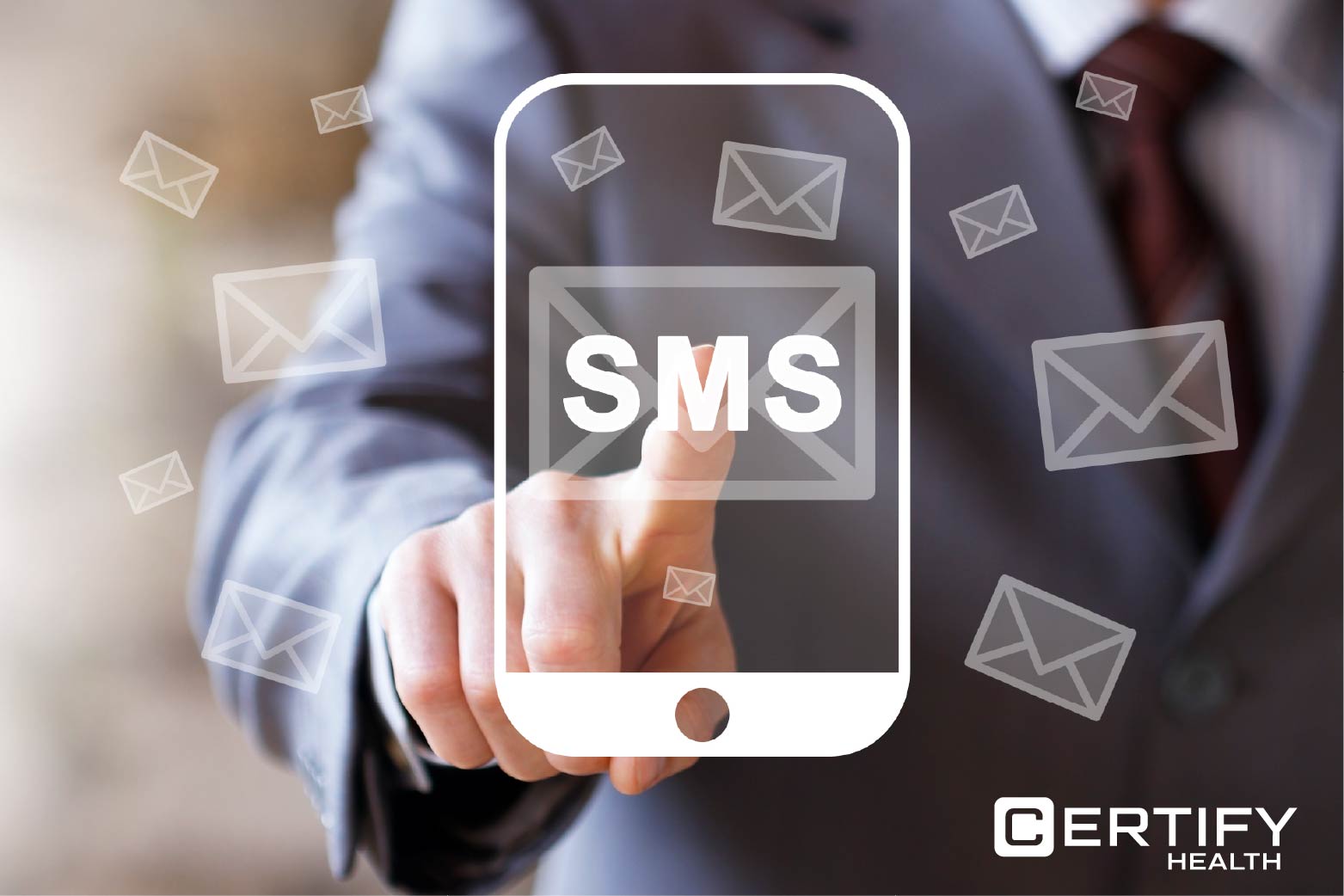
Because standard SMS text messages are not encrypted and may be retained on unprotected servers, they are typically not regarded as HIPAA compliant text messages. For messaging patients in a way that complies with HIPAA, follow the given pointers:
- Use specialized platforms that offer HIPAA compliant text messaging to patients designed for healthcare.
- Stick to generic appointment reminders in standard SMS, like “Your appointment is tomorrow at 2 PM,” so no personal health details are shared. This keeps things safe if a text is seen by someone else.
- Obtain written consent before engaging in any text message communication with patients.
- Ensure your HIPAA text messaging solution includes encryption, secure authentication, and automatic message expiration.
Remember that messaging apps like WhatsApp and iMessage, which are typically not HIPAA compliant without additional security measures, are also subject to the requirements governing HIPAA compliant texting with patients.
Mail Communication

When you are using mail communication channel to communicate with patients, to meet HIPAA compliant mail requirements follow the given below pointers:
- Make use of opaque envelopes and position information inside the mail to prevent PHI from being visible through envelope windows.
- For highly sensitive information, consider using certified mail or services where patient or receiver is required to signature before receiving the mail.
- Verify addresses before sending mail containing PHI.
- Limit the information included to the minimum necessary for the purpose.
In-Person Communication

Even face-to-face conversations require attention to HIPAA compliance:
- Conduct discussions with patients in private areas where conversations cannot be overheard.
- Be mindful of computer screens displaying PHI—position them away from public view.
- Use sign-in sheets that don’t reveal the reason for patient visits.
You Might Also Like To Explore This Blog: A Complete Guide on HIPAA Compliance in Patient Intake
Best Practices for HIPAA-Compliant Patient Communication
Authorization and Consent
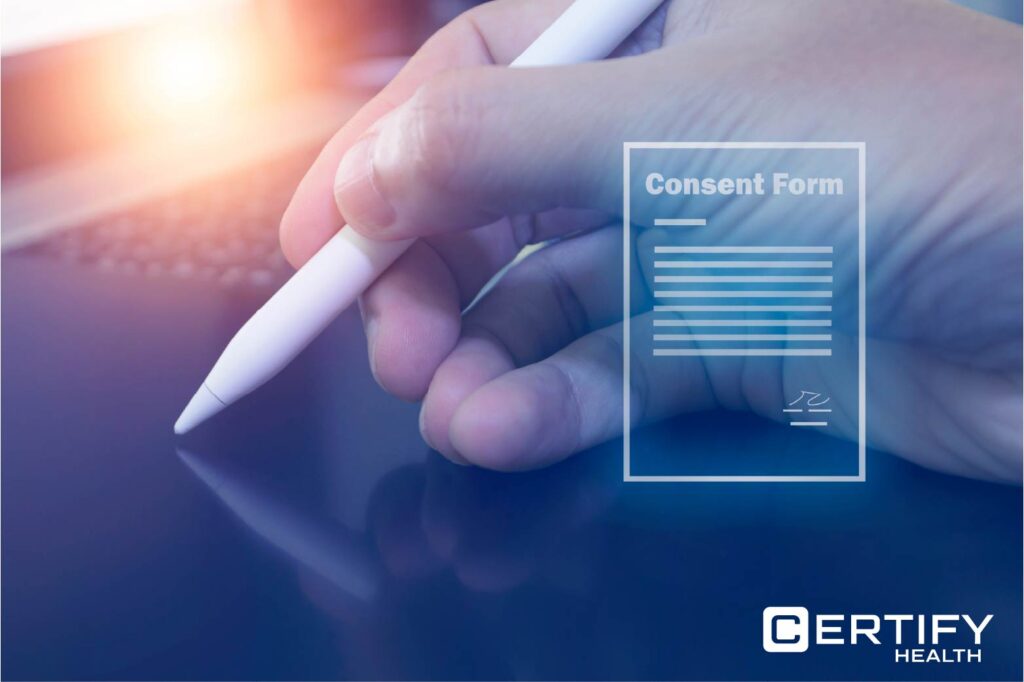
Proper authorization and consent form the foundation of HIPAA compliant patient communication for healthcare practices, therefore follow the below-given steps:
- Develop clear consent forms that specifically address each communication method you use.
- Obtain explicit patient consent for their preferred communication methods and document these preferences.
- Include clear language about the risks associated with less secure communication methods if patients choose them.
- Allow patients to modify or revoke consent for specific communication methods at any time.
By prioritizing proper authorization and consent, you demonstrate respect for patient preferences and privacy while protecting yourself legally.
Pro tip: CERTIFY Health’s patient scheduling platform provides real-time appointment booking, automated confirmations, and two-way communication features, ensuring that patients stay informed and connected with their providers.
Secure Communication Methods
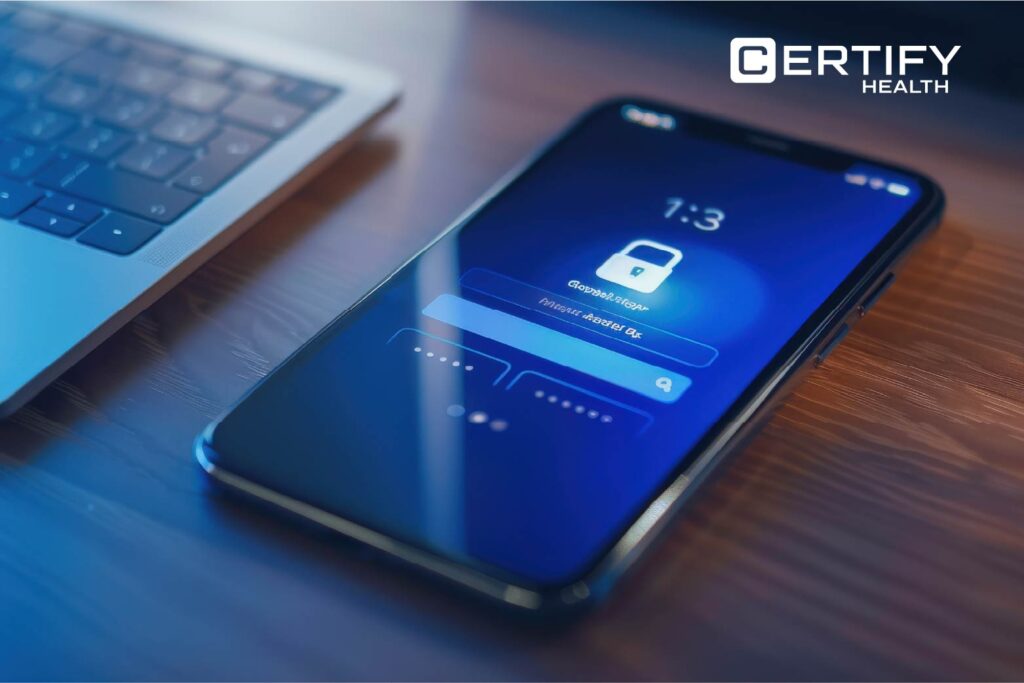
Implementing secure communication methods is essential for HIPAA compliance:
- Invest in encrypted, HIPAA compliant email solutions specifically designed for healthcare.
- Consider secure patient portals as a centralized hub for communications, where patients can access messages, schedule appointments, test results, and appointment information in one secure location.
- Use HIPAA compliant phone systems with proper authentication protocols.
- Implement secure HIPAA compliant text messaging platforms that include encryption, access controls, and audit trails.
Using secure communication methods creates a foundation for safe and efficient patient communication.
Staff Training

Your staff plays a crucial role in maintaining HIPAA compliant patient communication, here’s how it works:
- Give your staff training on changing HIPAA regulations and their practical application.
- Include role-specific training for different staff positions on proper communication protocols.
- Use real-world scenarios and examples to show them how does potential HIPAA violations occurs and how to avoid them.
- Define and create clear escalation procedures for staff to report potential breaches or concerns effectively when non-compliance occurs.
Good staff training serves as your first line of defense against HIPAA violations.
Regular Audits

Ongoing monitoring ensures continued compliance, they help you identify where is a miss and what can be done if you are not compliant with HIPAA.
- You should do routine security audits of your communication systems and practices.
- Also, review access logs regularly to spot any unusual patterns that might indicate unauthorized access.
- Test your patient communication systems periodically for vulnerabilities.
- Update your policies and procedures based on audit findings and evolving technology.
Regular audits help you identify and address potential compliance issues before they become serious problems.
Common Pitfalls to Avoid
Even with the best intentions and technology, healthcare providers often fall into these common HIPAA compliance traps:
- Sending unencrypted emails containing PHI, one of the most frequent causes of HIPAA violations.
- Using standard text messaging for communications containing protected health information.
- Avoid discussing the patient information in areas where others hear it out and misuse it.
- Failing to obtain proper authorization before sharing information with family members.
- Using consumer-grade apps and platforms without proper BAAs for patient communication.
- Neglecting to document patient communication preferences and consent.
By being aware of these common pitfalls, you can take necessary steps to avoid them and ensure compliance in your practice.
Benefits of HIPAA-Compliant Communication
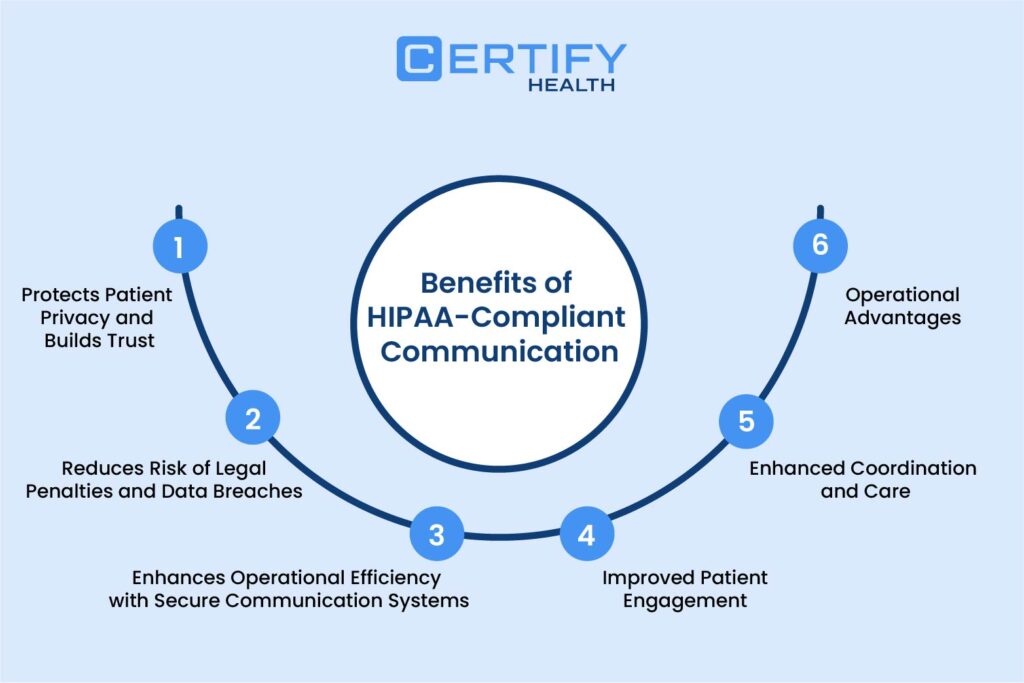
1. Protects Patient Privacy and Builds Trust
When your practice prioritizes HIPAA compliant patient communication, it shows your commitment to patients on protecting their sensitive information and building trust. This commitment doesn’t go unnoticed by patients:
- Patients feel secure sharing personal health information when they know it’s being handled properly.
- Trust develops naturally when patients see consistent protection of their privacy.
- Your practice’s reputation strengthens as patients recognize your dedication to confidentiality.
In the present world where data breaches regularly make headlines, demonstrating strong patient privacy protection creates a significant competitive advantage.
2. Reduces Risk of Legal Penalties and Data Breaches
The financial implications of non-compliance are substantial:
- HIPAA violations can result in charges to pay ranging from $100 to $50,000 per violation, with annual maximums of $1.5 million.
- Apart from direct penalties, the costs of breach notification, remediation, and potential lawsuits can bring a financial strain on your practice.
- Implementing proper HIPAA compliant patient communication systems such as CERTIFY Health’s patient communication platform can significantly reduce these non-compliance risks.
Additionally, the proper security measures required for HIPAA compliance naturally reduce your vulnerability to data breaches and cyberattacks.
3. Enhances Operational Efficiency with Secure Communication Systems
Contrary to the misconception that compliance slows things down, HIPAA compliant communication systems often improve operational efficiency:
- Secure messaging platforms streamline communication between providers and patients.
- Digital documentation of communication eliminates paper-based record-keeping.
- Automated systems for appointment reminders reduce staff workload while maintaining compliance.
- Standardized processes for handling patient communications reduce errors and inconsistencies.
Modern HIPAA compliant patient communication tools are designed with both security and efficiency in mind, allowing you to accomplish more while maintaining strong protection.
4. Improving Patient Engagement
Secure, compliant communication channels can help in improving patient engagement:
- Patients appreciate having multiple secure ways to communicate with their healthcare providers.
- Clear communication protocols make patients more likely to reach out with questions or concerns.
- Secure messaging often leads to more frequent and meaningful interactions between appointments.
- Patient portals that combine messaging, appointment scheduling, and access to records create a seamless patient experience.
When patients can communicate easily and securely, they become more active participants in their own healthcare.
5. Enhanced Coordination and Care
HIPAA compliant communication improves healthcare delivery:
- Secure provider-to-provider messaging ensures critical patient information is shared appropriately.
- Better communication leads to fewer medical errors and improved patient outcomes.
- Care teams can collaborate more effectively when using secure, compliant platforms.
The ultimate goal of healthcare communication is better patient care, and HIPAA compliant systems support this goal.
6. Operational Advantages
Beyond compliance, there are tangible business benefits:
- Reduced costs associated with paper-based communication.
- Lower risk of costly data breaches and associated remediation.
- Improved staff efficiency through streamlined communication workflows.
- Better integration with telehealth and other digital health initiatives.
HIPAA compliant patient communication systems represent an investment that pays dividends through improved operations and reduced risks.
Conclusion
Achieving HIPAA compliant patient communication is not just for avoiding penalties, but it is for improving your patient’s care quality, building patient trust, and creating a more efficient practice that is safe.
Therefore, in the healthcare communication landscape, to keep up with changing HIPAA requirements, you need to keep your current systems in check and look out for smarter technologies.
To ensure safe and efficient patient communication, understand HIPAA and its requirements, educate your staff, ensure they follow it strictly and do not forget to do frequent audits to ensure you are compliant.
Keep in mind that compliance is a continuous effort rather than a one-time accomplishment. Make sure your practice is compliant and stay up to date on new communication technology, growing security concerns, and changing regulations.
The most crucial thing is to use HIPAA-compliant patient communication as a chance to show your dedication to patient privacy, to optimize your business processes, and to set your practice apart in a very competitive healthcare market.
Ready to take your patient communication strategy to the next level? Check out Effective Patient Communication in Healthcare: Strategies for Better Patient Interactions


